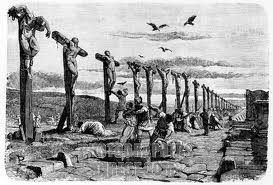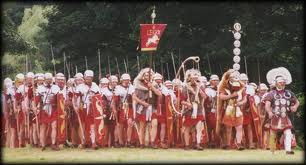One of the signs of a great story is the listener’s question, “What happened next?” In the National Geographic for March 2012 the cover article is “The Journey of the Apostles”, detailing the lives and teachings of not just the original Twelve, but also others such as Mary Magdalene, after Jesus’ crucifixion. We have stories about what happened to all of them, and to many others associated with Jesus. Not all the stories are believable, but where there is no fact there is plenty of speculation and legend.
Except in the case of Joseph, the (step)father of Jesus.
This is strange. If his fate was unknown, we would have legends and rumors. Search for “What happened to Joseph of Arimathea?”, for example, and you find him traveling all over the place, carrying the Holy Grail, settling in Britain, you name it. But search for “What happened to Joseph the father of Jesus?”, and you find nothing about him after his last mention in the Gospels, going up to the Temple in Jerusalem with Mary and Jesus when Jesus was 11 or 12.
But suppose his fate was a) not something that the early Church wanted to talk about, and b) so well-known that no one could make up an alternative narrative without having the whole thing dragged out into public discussion again. Therefore silence. No narrative, no legends, nothing.
The interesting event that happened around that time (probably later in the same year that Joseph took Jesus to Jerusalem, but the timing is uncertain) was an uprising led by Judas of Galilee with an attack on Sepphoris. (Sepphoris is the Roman name; the Hebrew name is Zippori.) This was Herod Antipas’ capital city in Galilee, 4 miles north of Nazareth. Probably a lot of men from Nazareth were in the uprising. The uprising was crushed by the Romans, and the Romans crucified 2,000 Jews outside Sepphoris.
And after that, we don’t hear anything about Joseph in the Bible, or in legends or stories.
Jesus, however, retains a remarkable father-fixation all his life, and is himself crucified after leading an attack on the Temple in Jerusalem, having tried to claim the messianic kingship of Israel.
So… what happened to Joseph? And why didn’t anyone want to talk about it in the early Church, as they tried to make Christianity acceptable throughout the Roman Empire?








